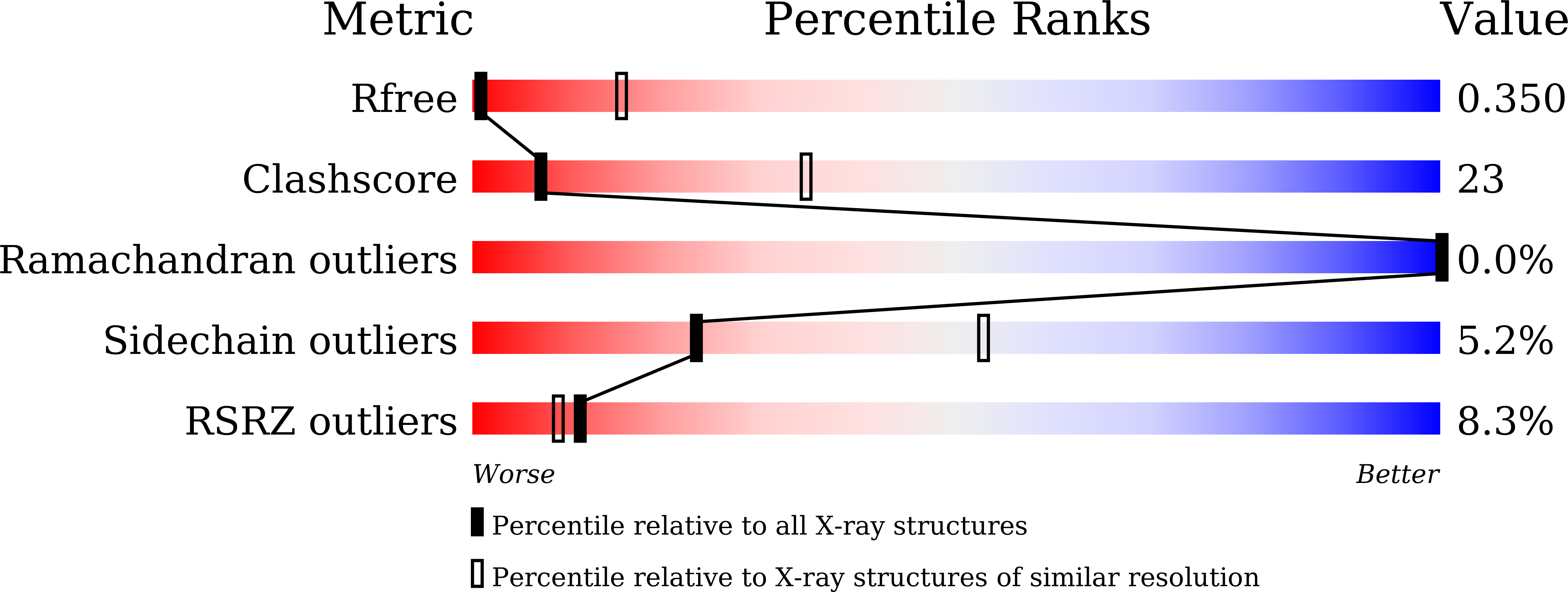Crystal structure of a human plasma membrane phospholipid flippase.
Nakanishi, H., Irie, K., Segawa, K., Hasegawa, K., Fujiyoshi, Y., Nagata, S., Abe, K.(2020) J Biol Chem 295: 10180-10194
- PubMed: 32493773
- DOI: https://doi.org/10.1074/jbc.RA120.014144
- Primary Citation of Related Structures:
6LKN - PubMed Abstract:
ATP11C, a member of the P4-ATPase flippase, translocates phosphatidylserine from the outer to the inner plasma membrane leaflet, and maintains the asymmetric distribution of phosphatidylserine in the living cell. We present the crystal structures of a human plasma membrane flippase, ATP11C-CDC50A complex, in a stabilized E2P conformation. The structure revealed a deep longitudinal crevice along transmembrane helices continuing from the cell surface to the phospholipid occlusion site in the middle of the membrane. We observed that the extension of the crevice on the exoplasmic side is open, and the complex is therefore in an outward-open E2P state, similar to a recently reported cryo-EM structure of yeast flippase Drs2p-Cdc50p complex. We noted extra densities, most likely bound phosphatidylserines, in the crevice and in its extension to the extracellular side. One was close to the phosphatidylserine occlusion site as previously reported for the human ATP8A1-CDC50A complex, and the other in a cavity at the surface of the exoplasmic leaflet of the bilayer. Substitutions in either of the binding sites or along the path between them impaired specific ATPase and transport activities. These results provide evidence that the observed crevice is the conduit along that phosphatidylserine traverses from the outer leaflet to its occlusion site in the membrane and suggest that the exoplasmic cavity is important for phospholipid recognition. They also yield insights into how phosphatidylserine is incorporated from the outer leaflet of the plasma membrane into the transmembrane.
Organizational Affiliation:
Cellular and Structural Physiology Institute, Nagoya University, Nagoya, Japan.




















